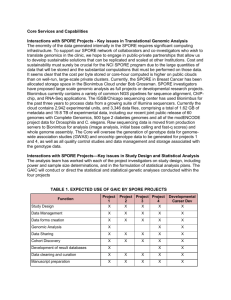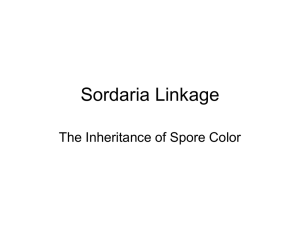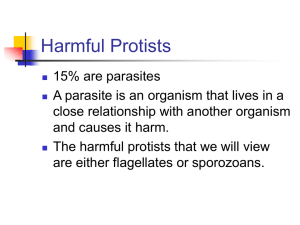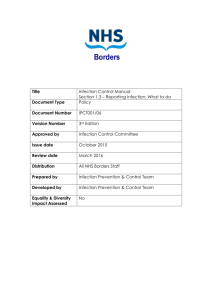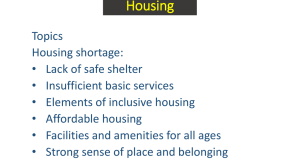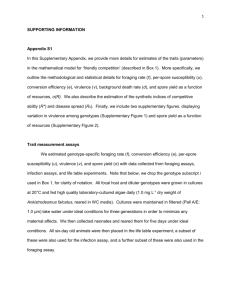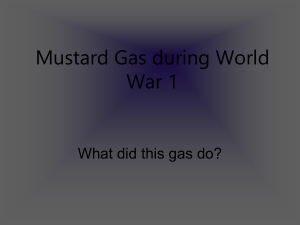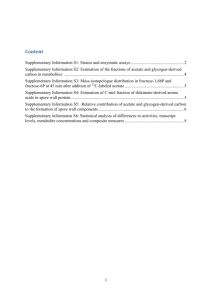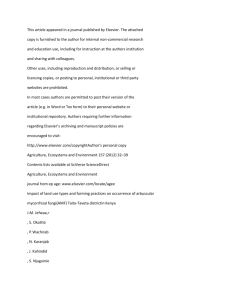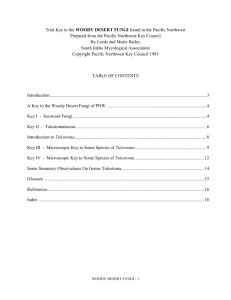appendix 2
advertisement
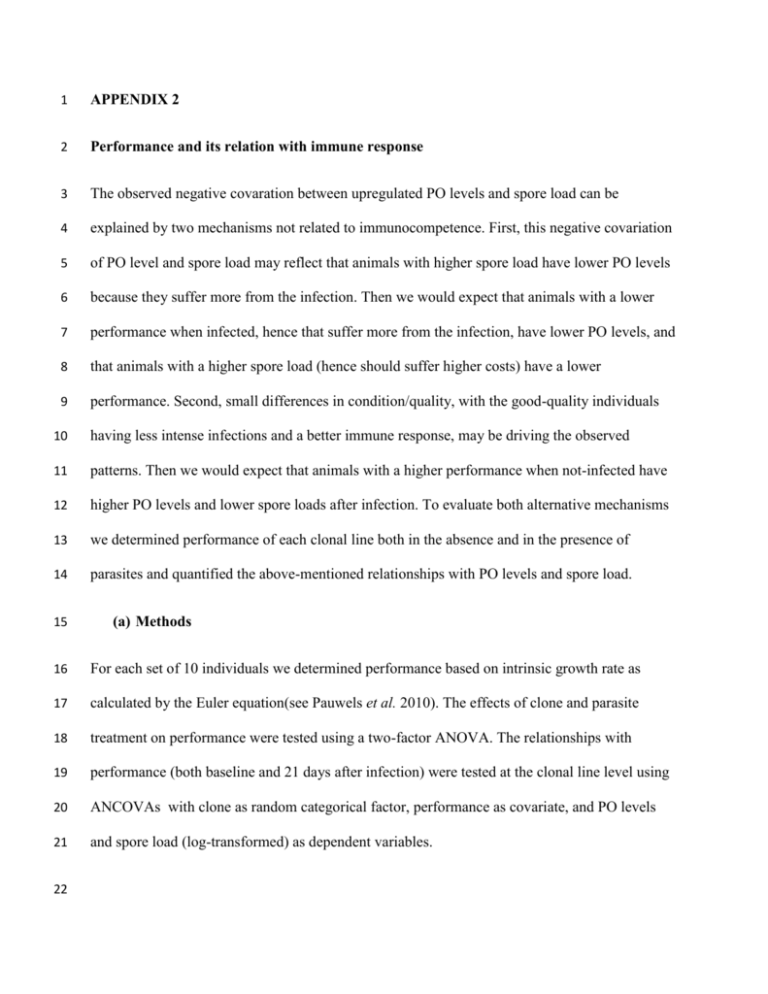
1 APPENDIX 2 2 Performance and its relation with immune response 3 The observed negative covaration between upregulated PO levels and spore load can be 4 explained by two mechanisms not related to immunocompetence. First, this negative covariation 5 of PO level and spore load may reflect that animals with higher spore load have lower PO levels 6 because they suffer more from the infection. Then we would expect that animals with a lower 7 performance when infected, hence that suffer more from the infection, have lower PO levels, and 8 that animals with a higher spore load (hence should suffer higher costs) have a lower 9 performance. Second, small differences in condition/quality, with the good-quality individuals 10 having less intense infections and a better immune response, may be driving the observed 11 patterns. Then we would expect that animals with a higher performance when not-infected have 12 higher PO levels and lower spore loads after infection. To evaluate both alternative mechanisms 13 we determined performance of each clonal line both in the absence and in the presence of 14 parasites and quantified the above-mentioned relationships with PO levels and spore load. 15 (a) Methods 16 For each set of 10 individuals we determined performance based on intrinsic growth rate as 17 calculated by the Euler equation(see Pauwels et al. 2010). The effects of clone and parasite 18 treatment on performance were tested using a two-factor ANOVA. The relationships with 19 performance (both baseline and 21 days after infection) were tested at the clonal line level using 20 ANCOVAs with clone as random categorical factor, performance as covariate, and PO levels 21 and spore load (log-transformed) as dependent variables. 22 23 (b) Results 24 Infected animals had a considerably lower performance (F1,22=37.5; p<0.0005, figure 1). Clonal 25 lines with a higher performance in the absence of parasites did not have higher PO levels 26 (ANCOVA, slope 0.00002, SE = 0.00003, t11= 0.51, p = 0.62, figure 2a) or a lower parasite load 27 when infected (ANCOVA, slope -0.050, SE = 0.030, t10= -1.66, p = 0.13, figure 2b). 28 Furthermore, clonal lines with a lower performance when infected did not have lower PO levels 29 when infected (ANCOVA, slope 0.00006, SE = 0.00025, t11= 0.25, p = 0.81, figure 2c) or a 30 higher spore load (ANCOVA, slope -0.34, SE = 0.21, t11= -1.61, p = 0.14, figure 2d). 31 (c) Discussion 32 In our study, higher PO levels in infected hosts were associated with lower spore loads. One may 33 argue that this negative covariation of PO level and spore load reflects that animals with higher 34 spore load have lower PO levels because they suffer more from the infection. This explanation 35 is, however, unlikely. Under that scenario, animals with a lower performance when infected, 36 hence that suffer more from the infection, should have lower PO levels which was not true. 37 Moreover, then we would also expect a negative covariation between spore load and 38 performance as animals with a higher spore load should bear higher costs. This also was not the 39 case indicating that spore loads were not driving life history and PO patterns. Similarly, Auld et 40 al. (2010) reported a higher upregulation of another immune component, hemocyte numbers, in 41 D. magna that became infected with P. ramosa indicating that also hemocyte upregulation was 42 not lower in animals that suffer more from the infection. Further, it is unlikely that small 43 differences in condition/quality, with the good-quality individuals having less intense infections 44 and a better immune response, are driving the observed patterns. This is because such good- 45 quality individuals should have a higher performance, which was, however, not related to 46 parasite load and immune response. In short, our results indicate that D. magna that up-regulate 47 PO to a higher level when infected with P. ramosa have a higher resistance to that parasite. 48 Obviously, very high doses of pathogens may succeed to overcome the immune system and then 49 we may no longer find any relationship between spore load and PO levels. In current experiment 50 the observed spore loads were all within the range observed when exposing Daphnia to 51 sediments from natural ponds (e.g. Decaestecker et al. 2007). Further, it remains to be tested to 52 what extent this observation can be generalized to other parasites or other host species. 53 54 55 56 57 58 59 60 61 62 63 64 65 66 (d) References Auld, S. K. J. R., Scholefield, J. A. & Little, T. J. 2010 Genetic variation in the cellular response of Daphnia magna (Crustacea: Cladocera) to its bacterial parasite. Proc. Roy. Soc. B, -. (doi:10.1098/rspb.2010.0772) Decaestecker, E., Gaba, S., Raeymaekers, J. A. M., Stoks, R., Van Kerckhoven, L., Ebert, D. & De Meester, L. 2007 Host-parasite 'Red Queen' dynamics archived in pond sediment. Nature 450, 870-U16. (doi:10.1038/nature06291) Pauwels, K., Stoks, R. & De Meester, L. 2010 Enhanced anti-predator defence in the presence of food stress in the water flea Daphnia magna. Funct. Ecol. 24, 322-329. (doi:10.1111/j.13652435.2009.01641.x) 67 Figure captions 68 Figure 1. Performance for four D. magna clones after 21 days of infection with the parasite P. 69 ramosa. Given are least square means ± 1 standard error. 70 71 72 Figure 2. Relationships between PO levels in infected hosts and (a) performance in not-infected 73 hosts (b) and performance in infected hosts; and the relationships between (log transformed) 74 spore loads and (c) performance in not-infected hosts and (d) performance in infected hosts. 75 Symbols represent the different clones, and clonal means are plotted ± SE (full symbols). 76 77
